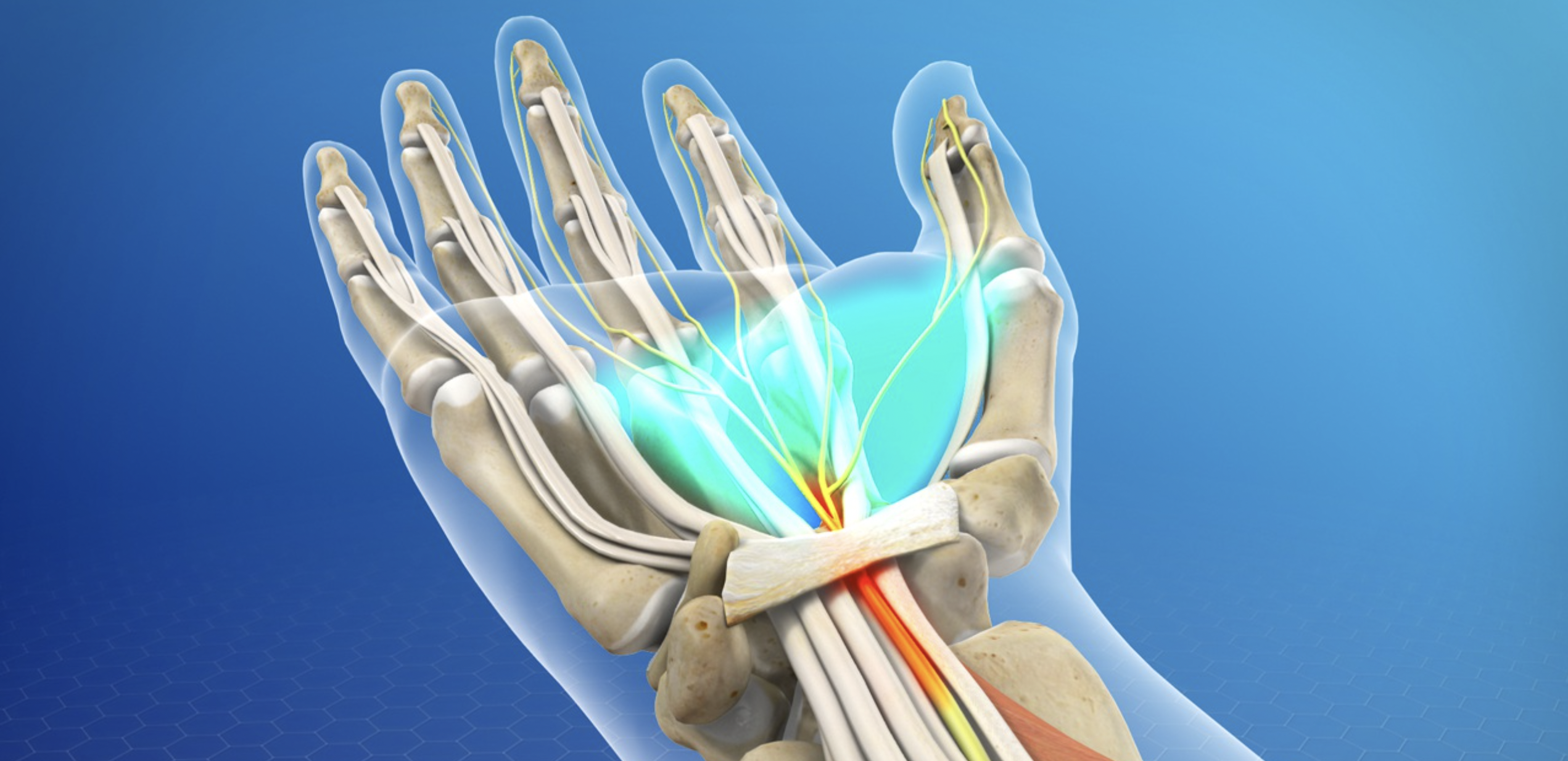Carpal Tunnel Syndrome (CTS) Treatment
Carpal tunnel syndrome (CTS) is one of the most common wrist conditions that occurs when the median nerve- one of the major nerves to the hand running from the forearm into the palm of the hand – becomes compressed or squeezed at the wrist. The median nerve helps in the forearm movement and provides sensation to the thumb, index finger, long finger, and part of the ring finger as well as the hands.
The carpal tunnel is a narrow, rigid passageway of ligament and bones at the base of the hand, which houses the median nerve and tendons. Thickening from irritated tendons or other swelling can narrow the tunnel and cause the median nerve to be compressed. This compression can lead to pain, numbness, and weakness in the hand and arm.
Cuba’s highly skilled medical workforce, including surgeons experienced in minimally invasive techniques, treats carpal tunnel syndrome based on the condition’s severity, the symptoms experienced, and the level of weakness, ensuring high success rates and swift recovery.
The benefits of carpel tunnel syndrome treatment are significant, particularly in preventing progression of the condition and long-term complications such as:
- Muscle weakness and atrophy
- Impact on work and daily life
Forms of Carpal tunnel syndrome
CTS is itself a specific condition, however, it can present in various forms and severities:
- Mild Carpal Tunnel Syndrome: Symptoms usually occur during or after activities involving wrist movement.
- Moderate Carpal Tunnel Syndrome: Symptoms are more frequent and persistent and may interfere with daily tasks.
- Severe Carpal Tunnel Syndrome: Symptoms are continuous and severe impacting daily functioning and quality of life.
- Acute Carpal Tunnel Syndrome: A rare form that can occur suddenly, often due to trauma or acute inflammation.
- Chronic Carpal Tunnel Syndrome: Develops gradually over time, often due to repetitive strain or underlying health conditions like diabetes or rheumatoid arthritis. Symptoms may progress slowly and persist over long periods.
Causes
Most cases of carpal tunnel syndrome are caused by a combination of factors with women and older people more likely to develop the condition.
Other risk factors include:
- Heredity: Heredity traits such as having naturally smaller carpal tunnel or the presence of anatomical variations that reduce the space available for the nerve.
- Repetitive hand use: Repeating the same hand and wrist motions or activities over a long time may aggravate the tendons in the wrist, causing swelling that puts pressure on the nerve.
- Wrist fractures: A wrist fracture or dislocation can alter the space within the carpal tunnel putting pressure on the median nerve.
- Pregnancy: Hormonal changes during pregnancy can cause swelling that results in pressure on the nerve.
- Nerve-damaging conditions: Some chronic conditions, such as diabetes, rheumatoid arthritis and thyroid gland imbalance increase the risk of nerve damage, including damage to the median nerve.
- Obesity: Excess body weight can increase pressure within the carpal tunnel, leading to compression of the median nerve.
- Body fluid changes. Fluid retention and fluctuations in fluid levels can cause swelling which may increase the pressure within the carpal tunnel, irritating the median nerve.
Symptoms
Symptoms are typically first noticed at night and gradually may start affecting daily activities. Symptoms include:
- Numbness and/or tingling in the wrist, hand or fingers, particularly in the fingertips.
- Pain and burning sensation that travels up the arm.
- Wrist pain at night that interferes with sleep.
- Trouble with fine motor activities such as holding or controlling objects.
- Intermittent shock-like sensations that radiate to the thumb, index, middle, and ring fingers.
Diagnosis
A combination of physical and imaging tests are carried out to diagnose carpal tunnel syndrome, including:
- Physical Examination: Checking for symptoms such as numbness, tingling, and weakness in the hand and wrist.
- Nerve Conduction Studies: These tests measure the electrical activity of muscles and nerves to detect nerve damage and dysfunction by measuring how quickly electrical signals move through the nerves.
- Electromyography: This test measures the tiny electrical discharges produced in muscles.
- Imaging: Ultrasound or MRI may be used to assess the size of the median nerve and rule out other conditions.
Treatment Options
CTS treatment aims to alleviate symptoms, improve hand function, and prevent further nerve damage. The treatment approach varies based on the severity of the condition, ranging from conservative methods to surgical intervention.
Non-Surgical Treatments
Treatment for CST initially begins with non-surgical methods, including:
- Lifestyle modifications: Avoid or modify activities that exacerbate symptoms, such as repetitive wrist movements and using neutral wrist position.
- Wrist splinting: Wearing a night splint to keep the wrist in a neutral position and / or wearing a day splint during activities to minimize wrist movement.
- Medications: This includes over-the-counter medications to reduce inflammation or corticosteroids injections into the carpal tunnel can reduce inflammation and swelling, providing temporary relief.
- Physical therapy and manual therapy: Stretching and strengthening exercises for the wrist and hand can improve flexibility and muscle strength, reducing symptoms. Additionally, manual therapy provides techniques such as nerve gliding exercises and soft tissue mobilization which can help relieve pressure on the median nerve.
Surgical Treatments
When non-surgical treatments fail to provide relief or in cases of severe carpal tunnel syndrome, surgery may be necessary.
- Carpal Tunnel Release Surgery: In this procedure, a small incision is made in the palm of the hand to divide or cut the transverse carpal ligament (the roof of the carpal tunnel) so as to increases the size of the tunnel and decreases pressure on the median nerve.
After surgery, the ligament may gradually heal in a lengthened form, creating more space in the carpal tunnel and relieving pressure on the median nerve.

